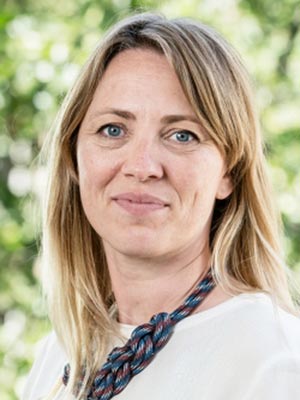In 2014, ANN made its 100,000 Women Commitment: a commitment to empower 100,000 women working in its global supply chain. Through a strategic partnership with HERproject, ANN achieved this milestone in 2018.
Christine Svarer, Director of HERproject, sat down with Jeanette Ferran Astorga, Vice President, Corporate Responsibility at ascena retail group, parent company of brands Ann Taylor, LOFT, and Lou & Grey, to discuss the rationale behind the commitment, its impact, and next steps.
Christine Svarer: Can you tell us a bit about how your 100,000 Women Commitment came about?
Jeanette Ferran Astorga: Absolutely. Our commitment, and our partnership with HERproject, was driven by our core values as an organization. From our corporate leadership on down, we believe every woman deserves a chance to be her best self every day, and we’ve been clear about how important it is to us to help women have the confidence to shape their lives in the way they want.
We aim to give women confidence through fashion and inspiration, but that must be matched by standing with and supporting the women in our supply chain. When we discussed how to do this, we realized that empowering women with knowledge of and access to services around health was a critical step, so we decided to commit to HERproject, BSR’s flagship women’s empowerment initiative. We were drawn to the peer-to-peer training model that enables women employees to acquire and share knowledge and skills. We also liked that HERproject brings together companies, their suppliers, and local partners to deliver workplace-based trainings focused on increasing women’s knowledge and self-esteem, while also strengthening management systems to create inclusive workplaces.
Svarer: Shared values, like a shared goal, are so critical for a strong partnership—at least in our experience. And it was clear from the start that our values aligned. We know that when women working in supply chains have the confidence and ability to shape their lives through choices they value, they can be a huge positive force for change.
Ferran Astorga: Exactly. And it’s important to flag that none of this would have been possible without a similar shared belief in empowering women. Before we started, we consulted our strategic suppliers and confirmed that we would have their support to make this happen, as they needed to make the commitment to allow time for training and to support staff toward becoming peer educators, who would then bring the curriculum to their colleagues. Overwhelmingly, we found that our suppliers wanted to be part of HERproject.
As this commitment to supporting women in our supply chain has developed, it’s been amazing for us to see how our suppliers have found their own ways to spark employee engagement. HERproject gives suppliers the framework and the guidance for the trainings, but the suppliers have really stepped up in terms of customizing the programs to meet their employees’ needs, whether through health fairs, or having local doctors come in and run health clinics, or nutritional sessions for men and women. That’s a mark of success for us—that the suppliers have made it their own.
Svarer: I really like the connection from the corporate level to vendors, suppliers, and on to women workers. That really aligns with our belief at HERproject that for women’s empowerment to take hold—but also to create resilience in global supply chains—everyone must pull in the same direction.
Ferran Astorga: I agree. Another way we try to ensure that alignment is through embedding performance in this program into our vendor scorecards. Our vendors are assessed on how they are driving the initiative and how they are supporting the peer educators; we measure it as part of their commitment to management systems and improved workplace practices. That’s part of our effort to go beyond compliance and develop leading practices.
Svarer: Absolutely—and we’re seeing other companies tying their commitment to women into how they work with their suppliers. What has been central to our work with you is that you have made women’s empowerment part and parcel of good business.
Ferran Astorga: That’s certainly our vision—and it means looking at our policies, as well as our programs. Earlier this week, we published a revised Code of Conduct for merchandise suppliers for the ascena retail group, which includes ANN’s brands. On two occasions in the last few years, we worked with BSR to revise this code through a gender lens, ensuring that specific challenges and obstacles that women face are incorporated into our expectations of suppliers. We have just launched the latest version of the code this week in line with International Women’s Day with a pronounced reference to supporting women in the workplace, especially informed by the UN Sustainable Development Goals and a commitment to SDG 5.
Svarer: I think that revising your Code of Conduct twice over the course of this partnership highlights not just your commitment but also how ANN continues to improve its ability to empower women within its supply chain. ANN has continued to learn and improve throughout this partnership—as have we at BSR and at HERproject.
The longer-term nature of ANN’s commitment is critical in this respect. Empowerment is not achieved overnight, so it’s been such a privilege for us to work with a partner like ANN that is in it for the long haul.
Ferran Astorga: I agree. And our work is not done. We’re continuing to work with HERproject to explore new ways to reach and empower the inspiring women who work in our supply chain, and we will be sharing more later this year. Stay tuned!

